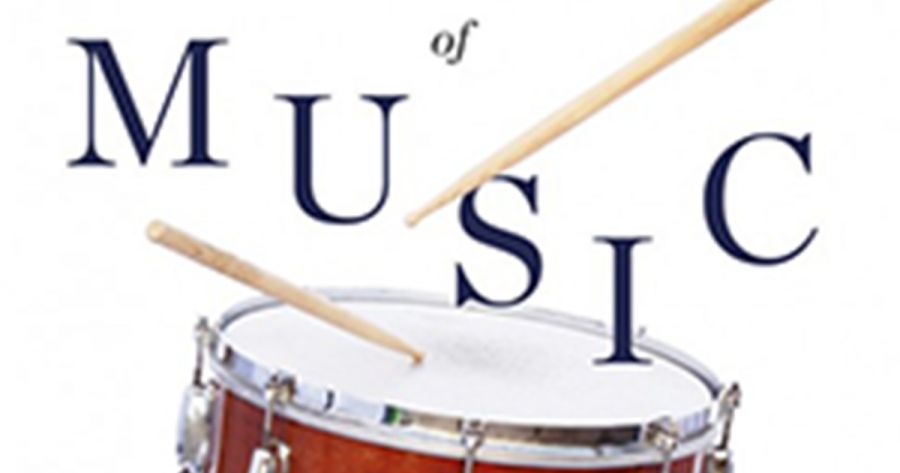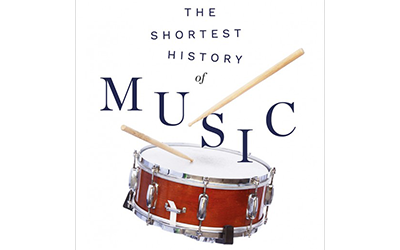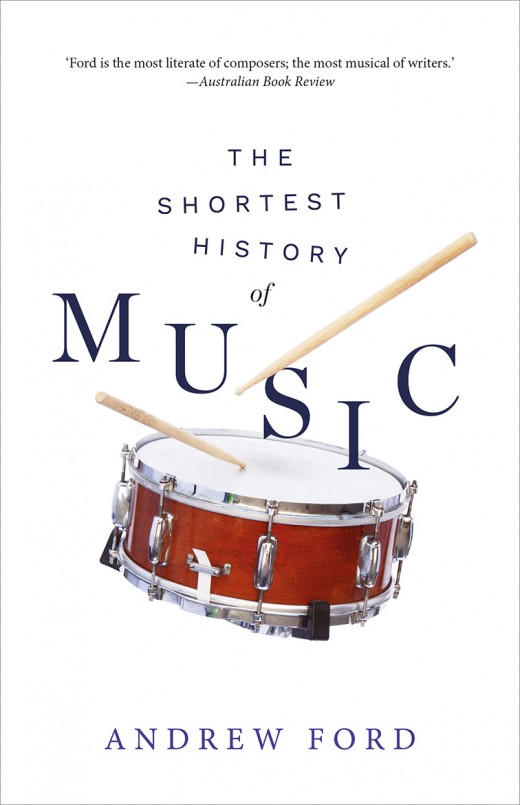
- Free Article: No
- Contents Category: Music
- Review Article: Yes
- Article Title: Musical challenges
- Article Subtitle: A new view of the sounded art
- Online Only: No
- Custom Highlight Text:
Andrew Ford is a musical polymath. On his website he identifies as a ‘composer, writer and broadcaster’. I suspect the Australian public knows him best as a broadcaster, given his three decades at the helm of the ABC’s Music Show. That broadcasting longevity does not diminish his continuing acclaim as a composer, as seen in the rousing première of his Red Dirt Hymns before a capacity Canberra Festival crowd on 2 May. Nor does it discount his run of hundreds of essays, and a dozen or so books. Some of those books are edited accumulations of his own press articles and reviews, often drawing on his well-researched Music Show interviews. But most of his books are devoted to particular musical passions: memory, harmony, noise, and, most repeatedly, song (David McCooey reviewed Ford and Anni Heino’s The Song Remains the Same [2019] in ABR, March 2020).
- Featured Image (400px * 250px):

- Alt Tag (Featured Image): Malcolm Gillies reviews ‘The Shortest History of Music’ by Andrew Ford
- Book 1 Title: The Shortest History of Music
- Book 1 Biblio: Black Inc., $27.99 pb, 240 pp
- Book 1 Cover Small (400 x 600):

- Book 1 Cover (800 x 1200):

- Book 1 Readings Link: https://www.readings.com.au/product/9781760644086/the-shortest-history-of-music--andrew-ford--2024--9781760644086#rac:jokjjzr6ly9m
The Shortest History of Music is the fourteenth volume in Black Inc.’s Shortest series, with its snappy rubric of biblical origin, ‘Life is short; history is long’. Existing volumes in the series are about countries (India, China, Greece), continents (Europe), and social organisation (democracy, war, economics), though not overlooking David Baker’s summative 256-page Shortest History of the World (2023), covering 13.8 billion years. Following such volumes, Ford’s book presents both as more focused, looking at just one art form, but also, through strategic use of memorable quotes, short case studies, and personality cameos, as more genuinely encompassing of his topic. He searches for simple but profound generalisations about as many manifestations of our world’s music as his 240-page limit allows. Like an experienced jazz player, he knows how to swing his narrative, with delightful off-road lurches into unexpected or cheeky byways, or skilfully pivoting around events of a certain date (such as from Arnold Schoenberg’s twelve-tone modernism to big-band swing, in the 1930s) to stress chronological coincidence. This highly readable, ‘shortest’ history contrasts with the ‘longest’ currently available, single-authored history of music, Richard Taruskin’s 4,272-page The Oxford History of Western Music (2005), which restricts itself mostly to the notated tradition of ‘classical’ music.
By contrast, Ford celebrates the music ‘happening all around us all the time’, whether notated, instrumental, or oral, spontaneous or rehearsed, in infancy or old age, and recorded or just ‘vibrating in the memory’ (Shelley). With his Music Show background in music’s diversity, where he has now conducted more than six thousand interviews, Ford is unafraid to speculate on a truly global scale – ‘It is probably true to say that West African rhythms and styles have had a greater effect on the world’s music than those of any other region’ – or to explain that ‘most of the world’s musical styles and forms are to some degree syncretic, and that instruments have travelled the globe’. Other important themes are woven, often subliminally, into the fabric of his text, such as the tension between valuations of progress, originality, and popularity in music’s varied reception, and his crisp rejection of the view that music is a ‘universal language’, unveiled in his first chapter’s first paragraph. He even reminds us later in the book of the no-music injunction of the Taliban, and its origins.
Ford’s five chapters unfold different perspectives on music: as (unnotated) tradition, as notation, as commodity ‘for sale’, as something ‘modern’, and, in more recent times, as recorded artefact. Each chapter has a loosely chronological arrangement, often starting in ancient times but always ending up at the present day. All chapters ultimately lead to his book’s brief epilogue, ‘What is Music?’, and its open-ended conclusion: ‘You never know how far your music – your “organised sound” – will go or for how long, or who it will reach. You also don’t know what your sound might mean to those who hear it next week or next century and, in their own minds – their own imaginations – make it theirs.’
To my mind, the most exploratory, candid, and least finessed of Ford’s chapters was his fourth: ‘Music and Modernism: Reinventing the Arts from 1150 to the Present’. Here he integrates many of his first three chapters’ themes, to highlight those musicians who, across the ages and various styles, were ‘consciously modern’, and indeed present ‘the shock of the new’, even today. Claudio Monteverdi, Jimi Hendrix, Richard Wagner, Ruth Crawford Seeger, and Charlie Parker are among the musical modernists who ‘still pack a punch’. (Bach, Mozart, and Elgar are not modernist in this formulation, just more conservative in the manner of their innovations.) Ford observes that modernist music was ‘often jagged-edged’ and likens Louis Armstrong’s trumpet-playing of the 1920s to a ‘brash and jagged’ Pablo Picasso, ‘crackling with life’. It is curious, then, that Ford devotes hardly any of his modernist commentary to the music or musical practice of the twenty-first-century ‘present’, so pointedly mentioned in this and other chapter titles.
The Shortest History of Music is an unashamedly personal, and occasionally Australian, viewpoint on the sounded art and its employment. Ford’s Introduction begins with a Kalkadunga boy’s search with his father in 1987 for a suitable tree for making a didgeridoo. Ford speculates that this may have been a practice in Australia’s distant past, when other more documented musical practices were occurring in Europe or Asia. To frame the volume near the end of his Epilogue, he returns to that boy, William Barton, now a much-fêted performer and composer of Kalkadungu (2008), and celebrates the song that Barton, like so many of us, has carried within himself for many decades.
Whether in the shortest or the longest history of music, I find it compelling that neither Ford nor Taruskin writes a satisfactory ‘history’. But Ford does, in his Introduction, make a good attempt at explaining why that may be a fruitless exercise. The expectation of more or less continuous progress along a provable track of causation, already of questionable validity for a history of classical Western music, ‘hardly holds at all’ for other slices of the world’s music, in his opinion. Even in the age of ubiquitous recordings, music still exists primarily in ‘an endless present tense’, indeed ‘reborn in each fresh performance’. Ford’s engaging book, with its up-to-the-minute ‘Further Reading’ list, is a worthy rival to Nicholas Cook’s 143-page Music: A very short introduction (1998), for those who want their musical imaginings and prejudices to be challenged.


Comments powered by CComment